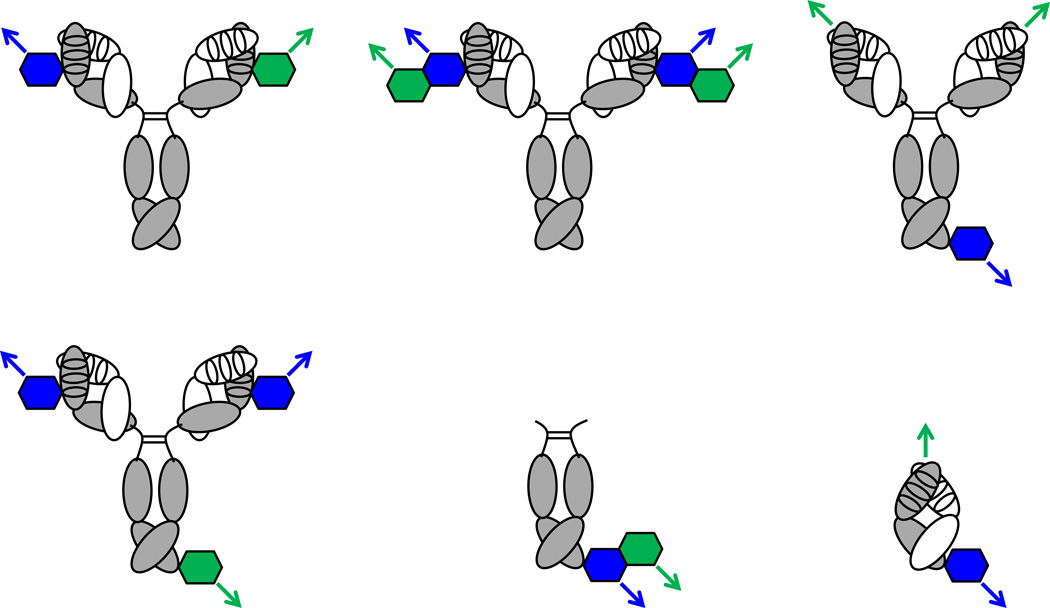Figure 4. Bispecific cpAbs.
Three conceptually different groups of bispecific cpAbs are depicted on the left, in the center, and on the right. All can simultaneously engage antigen-1 (blue arrow) and antigen-2 (green arrow). Bispecific cpAbs are generated by using two different synthetic components (blue and green hexagons) to chemically program an antibody component with two identical (top left) or two orthogonal (bottom left) unique reactivity centers. Bispecific bivalent cpAbs (top center) or bispecific monovalent cpAbs (bottom center) are generated by merging a bispecific synthetic component with an antibody component having two identical or one unique reactivity center, respectively. In cases where the antibody component of cpAbs harbors an antigen binding site that remains untouched by chemical programming, IgG-based (top right) or Fab-based (bottom right) bispecific cpAbs that bind to antigen-1 via their synthetic component and to antigen-2 via their antibody component can be generated.

